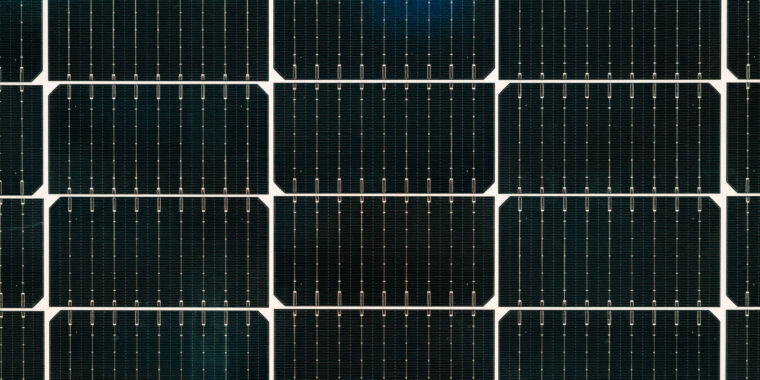the number of cells ready for recycling will grow dramatically within a few decades, and there are expected to be 80 million tonnes of panels ready for recycling each year by 2050.
That sounds like it’s a lot
The new work, rather than focusing on completely dissolving the materials used in constructing the panel, relies on a brief chemical treatment that largely severs the connections among the individual layers. While this results in some chemical byproducts, most of the material ends up intact and in a relatively pure form.
That sounds impressive. Hope the chemical byproducts are environmentally friendly or something.
Nice to hear. :) The process seems doable in a suitably equipped factory. :)
This is the best summary I could come up with:
Suddenly, concerns about the waste left behind when solar panels hit end-of-life became so common that researchers at the US’s National Renewable Energy Lab felt compelled to publish a commentary in Nature Physics debunking them.
Solar panels also have a useful lifespan of decades, and the vast majority of those in existence are less than 10 years old, so waste hasn’t even become much of a problem yet.
But a group of researchers from Wuhan University have figured out an alternative means of recycling that avoids the production of toxic waste, and is more energy-efficient as a bonus.
The new work, rather than focusing on completely dissolving the materials used in constructing the panel, relies on a brief chemical treatment that largely severs the connections among the individual layers.
The process starts with physically removing the aluminum frame and glass cover, both of which can be melted and reused for manufacturing.
This leaves the cells, which the researchers disassemble using a molten mixture of sodium and potassium hydroxide, which undergoes chemical reactions with most of the components it comes in contact with.
The original article contains 579 words, the summary contains 182 words. Saved 69%. I’m a bot and I’m open source!



